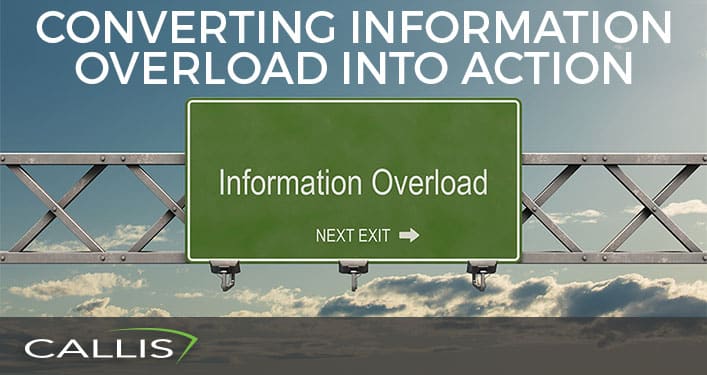Converting Information Overload into Action

We operate in a digital world. As marketers, almost everything we do has some form of digital component. People are online now more than ever; at work, at home, on the go. In marketing communications, it’s our job to reach those people with relevant and engaging marketing and advertising messages.
The good news about all this is that advancements in digital technology enable us to deliver targeted digital ads and content with pinpoint accuracy, reaching more new customers and extending our reach. The best part yet – operating in a digital world gives us the opportunity to track EVERYTHING, and it all starts with information.
Information is good. Utilizing information to drive marketing decisions is even better. But sorting through all the information at hand and translating that information into action can be a challenge and often overwhelming.
Utilizing a dashboard can help you convert this “information overload” into action – action that will help improve your results, maximize your efforts, and increase your ROI.
A dashboard is a data visualization tool that allows you to track and monitor established KPI’s (key performance indicator) in one interface. Information about the performance of your marketing campaigns can be pulled into a central dashboard location from various sources including Google Analytics, social media platforms, Microsoft excel, etc.
Dashboards offer many benefits. They simplify things and help us maximize time. We’re constantly pulled in several different directions, working on several different projects with different people and unique sets of circumstances – all with deadlines.
We have to maximize our time and make sure we are allocating it in the most efficient and effective ways possible. A dashboard can help you gather important information and display it in a centralized location.
Most of us are visual learners. Dashboards help us visualize and analyze important data by converting it into comprehensible charts and graphs. We can see trend lines much easier in a bar graph than through entries in an excel sheet.
Dashboards can also be in real-time. We can get a feel for how our marketing initiatives are performing and see results any time we want. Also, it doesn’t have to be just us. Dashboards can be shared with business partners, owners, members of sales and marketing teams, etc. to keep everyone informed of where we stand on the key performance metrics established for our marketing programs and our business.
Gathering information is the first step. Dashboards are tools designed to present a large amount of information in a quick and comprehensible manner. The real magic, however, and where companies are finding the most success, revolves around diving into the data in analytics and dashboards, and turning that information into effective marketing strategy. Simply put, converting information overload into action; and not just any action, but strategic and effective action to make your digital advertising, social media and ecommerce even more successful.

